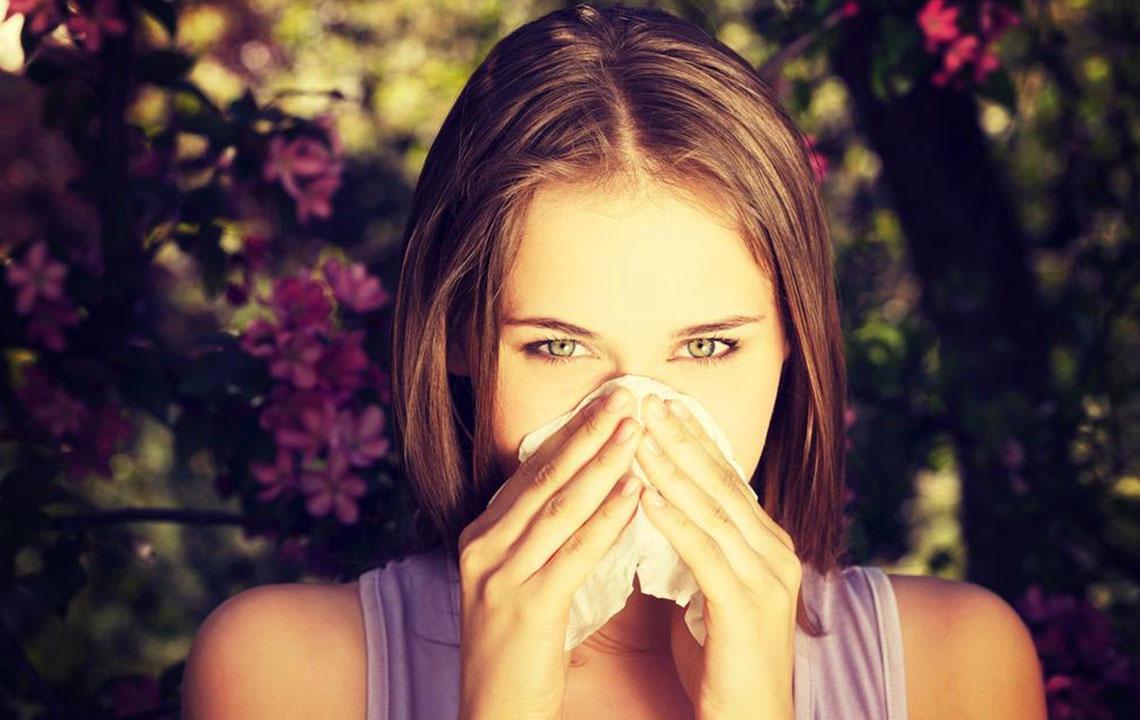A Month By Month Guide To Seasonal Allergies

People sometimes suffer from allergies for some part in the year. The most common among seasonal allergies are:
- Spring allergies
- Fall allergies
- Winter allergies
But there are cases where you end up suffering from allergies all through the year. This seasonal allergy chart can help you prepare for any kind of allergic reaction.
Let’s take a look at the range of seasonal allergies which affect people, and the part of the year when you’re most vulnerable.
January:
Pollen allergies may not be an issue during the cold months of winter. But indoor heating makes your house a dust-allergen hot spot.
Some basic preventive measures against house dust allergies are:
- Maintain home humidity below 55%
- Vacuum your home often
- Cover pillows and mattresses with dust mite-proof covers
February:
Dust could act as a year-round allergen for a large number of people. But if dust allergies are not a trouble for you, trees may still cause your allergies to peak.
In some parts of the world, tree pollen appears as early as February.
Trees that account for the most allergies are:
- Catalpa
- Elm
- Hickory
- Olive
Symptoms of tree allergies are the same as those caused by spring allergies. These include:
- Watery eyes
- Congestion
- Colds and flu
March:
Tree pollen stays the most common allergens in March as well. The month could cause spring allergies if grass grows early. Further, the pollen count in the air is also high in March. After this, is when the seasonal allergy chart gets into the real problem areas.
April:
April represents the onset of spring season. The flowers are in full bloom with pollen count at an all-time high. The flowers and the pollen, unfortunately, increase incidents of spring allergy.
In some places, grass pollen acts as a powerful allergen in April. As grass pollen combines with flower pollen, spring allergies peak around April.
May:
Tree pollen is one of the leading allergens in May. Tree pollination starts in February and can last through May. You’ll have to put up with spring allergies for around four months.
June:
June is the month which is most likely to cause grass pollen allergies. Grass may act as a trigger for spring allergies.
If you spend time outdoors, you may have to put up with spring allergies. These are subject to temperature and rainfall, and may, at times, last only a day or two.
July:
In July, fortunately, grass pollen content reduces to a great extent. So, grass pollen and spring allergies reduce in July. But another problem arises as you approach autumn, fungus and mold.
Fungus spores and seeds are in the air in a high percentage. Mold can also often be found on:
- Leaves
- Grass
- Compost piles
August:
August could be difficult if you suffer from an allergy to spores from mold. These allergies are at their highest in August, because of the hot, humid weather.
If mold spore count is very high, you should opt to stay indoors for the day.
One of the best ways to deal with mold spore filters is to use Air conditioning with a High efficiency particulate air filter. This could ensure that mold spore concentration indoors reduces to a great degree.
September:
Late summer months such as September often mark the onset of fall allergies. Ragweed is the most common allergen during this time of the year.
It is often subject to where you live, but fall allergies caused by ragweed could set in by August or September. These continue through October, and sometimes, through November as well.
Your allergic reaction could be stronger on windy days as pollen spreads faster. Humidity may also make your allergy significantly worse.
October:
Fall allergens might still be in the air in warmer climates. But in the cooler regions, these are more likely to reduce and vanish by October.
In this month, seasonal rain may still increase allergies caused by mold spores. So, you’ll still have to be cautious about mold.
November:
By mid-November, ragweed allergy season is likely to end in most places.
But, if you’re particularly allergic to fungi and molds, early fall makes the symptoms much worse. The allergies could stretch from March through November. It almost becomes a year-round allergy.
If you suffer from outdoor allergies, November is usually the most comforting because of the clean, cool air.
But November is also the time wherein indoor allergies caused by pet dander are at their highest. Indoor mold which breeds in the damp and cold environment often sets in around November.
December:
Christmas trees could trigger an allergic reaction in some people. In essence, it is not the tree, but mold spores on the leaves, which lead to allergies. Some ways to avoid allergies caused by mold spores are:
- Buy your Christmas tree a week before you plan to decorate it.
- Let it stand on the porch or the garage till you decorate it.
This seasonal allergy chart should help you figure out what allergens and dangers to look out for, and how to protect yourself. If your allergy symptoms get worse, consult a doctor immediately.
There are variety of seasonal allergy charts in tabular format on the Internet that will help you know about types of allergies and their preventive measures.


